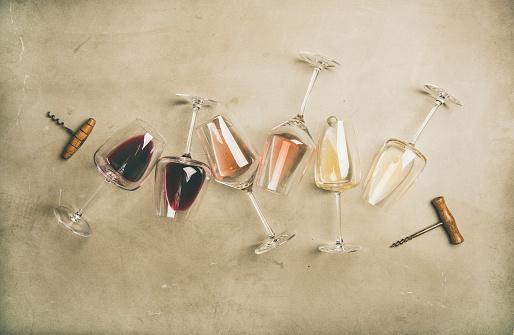The color? Well, okay, this could be the end of the article, but we are here not to joke, aren’t we? We cannot imagine another thing to be so different but have the same name.
The two most common types of wine are red and white. The distinction between red and white wine is not based on color. Aside from the color, there are numerous differences in manufacturing, flavor, scent, health advantages, and culinary pairings. There are also many sorts of red and white wine.
Although both wines are made from grape fermentation, there are some major distinctions in the process.
Winemakers keep the red grape skins on when fermenting red wine, which gives it its ruby color. White wine grapes, on the other hand, have their skins removed and are crushed into a transparent grape juice.
Those maybe are the most key differences between the two wines, but we cannot be limited only by this!
What’s Red wine?
To begin, red wine is an alcoholic beverage prepared from the juice of dark-skinned grapes that has been fermented. The basis material and production procedure of red wine differ from those of white wine. Dark-skinned grapes are used to make red wine rather than light-skinned grapes. The winemaker permits squeezed grape juice, known as must, to macerate and ferment with the dark grape skins during red wine production, adding color, flavor, and tannin to the wine. When yeast turns grape sugar into ethanol and carbon dioxide, alcohol is produced.
There is as much red wine knowledge to understand as red grapes are growing in every part of the planet, with hundreds of varieties of red wine grapes. However, you’ll probably only come across a few of these grapes regularly. The flavor profiles and geographies of the most common red wine grapes are covered here. You can go beyond this shortlist to learn more, but for a quick and easy red wine 101, the following will suffice.
Bordeaux red wine are among the most popular in the world’s wines. Nowadays, Californian wines and especially red wines from Napa Valley are fighting for the “most” wine, but french wines, and especially Bordeaux red wines.
What’s White Wine?
White wines are noted for their fruity freshness, as compared to red wines’ darker, more nuanced flavors. However, you’ll find a wide range of white wines from throughout the world, some of which are remarkable in terms of taste and the ability to age!
White wine is made from a variety of grape varietals and locales all over the world. The majority of white wines are made from direct-pressed white grape juice, which means that the grapes are harvested and brought back to the winery, and the juice is pressed out of them right away (with little to no “skin contact”). The manner this juice is vinified after pressing differs from winemaker to winemaker, but that’s part of what makes white wine so fascinating.
A dry white wine is a fantastic choice if you enjoy white wine but don’t want something overly sweet. Sauvignon Blanc and Pinot Grigio are both dry white wines. Vegetables, particularly roasted vegetables, and seafood go well with dry whites. Whitefish, such as halibut, go well with roasted carrots or zucchini.
Which One Is Better- White or Red?
If you want bright, fresh, zesty notes, there are plenty of white wines to choose from. There are plenty of red wines that will satisfy your berry cravings if you can’t get enough raspberries, strawberries, and blackberries.
Take this suggestion with a grain of salt, though. There’s no reason to limit yourself when there are so many fantastic wine alternatives available. Enjoy a variety of wines (including rosé) to your heart’s content.
You might be surprised by what appeals to you.















